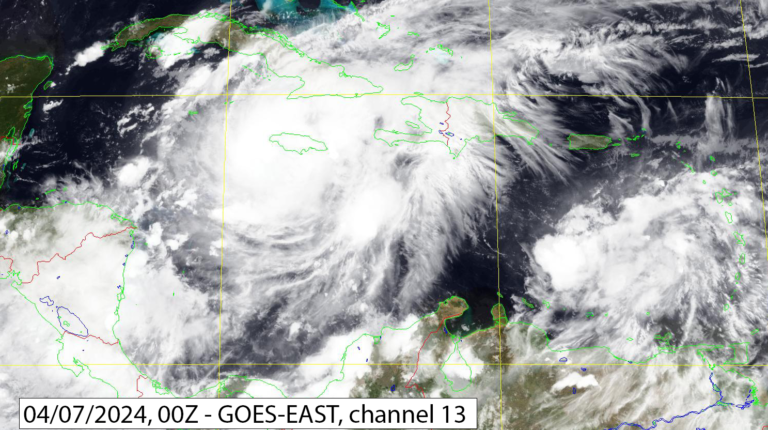In a significant advancement for real-time environmental monitoring and disaster response, Space Park Leicester, in collaboration with the National Centre for Earth Observation (NCEO), has successfully utilized its advanced satellite system to capture near real-time images of Hurricane Beryl.
The hurricane ripped across the Caribbean with winds of 240km/h (150mph) and, peaking at Category 5 on the Saffir-Simpson scale on July 2, was the earliest Category 5 system recorded since the scale was first introduced in 1974.
Space Park Leicester’s cutting-edge capability, part of a larger initiative funded by UK Research and Innovation’s (UKRI) World Class Laboratories scheme, demonstrates the potential of satellite technology to provide critical insights and support during natural disasters.
Advanced satellite data acquisition
The University of Leicester’s space and Earth observation hub is equipped with a state-of-the-art satellite data acquisition system known as EUMETCast which leverages two new 1.8m dishes mounted on the facility’s roof to receive data from the Hotbird 13G satellite.
Commenting on the system, Dr David Moore, NCEO scientist, School of Physics and Astronomy, University of Leicester, said, “The EUMETCast system is an integral part of the European Organisation for the Exploitation of Meteorological Satellites (EUMETSAT) network, providing a continuous stream of meteorological and climate data using standard digital video broadcast (DVB) technology.”
Rapid data processing
The received data is processed by two high-performance workstations that decrypt and perform initial analyses. A third workstation, dedicated to visualization, converts the data into interactive, user-friendly images and animations, offering dynamic visual insights into weather patterns and atmospheric conditions.
Moore added, “The EUMETCast system excels in delivering data within a short timeframe, often within three hours and in many cases within just one hour of collection. This rapid data acquisition and processing are pivotal for responding to dynamic environmental events.
“During Hurricane Beryl, Space Park Leicester’s satellite dishes are receiving timely imagery, enabling detailed monitoring and analysis of the storm’s development and trajectory.”
The imagery and data acquired from EUMETCast at Space Park Leicester will provide invaluable support for global disaster response. By analyzing satellite data in near real time, experts at the NCEO can rapidly assess the scale and impact of natural disasters.
Moore continued, “Data acquired from EUMETCast will be used for ocean monitoring, atmospheric composition and land applications, allowing scientists across NCEO institutes to provide a rapid analysis and response to events such as hurricanes, wildfires and floods.”



